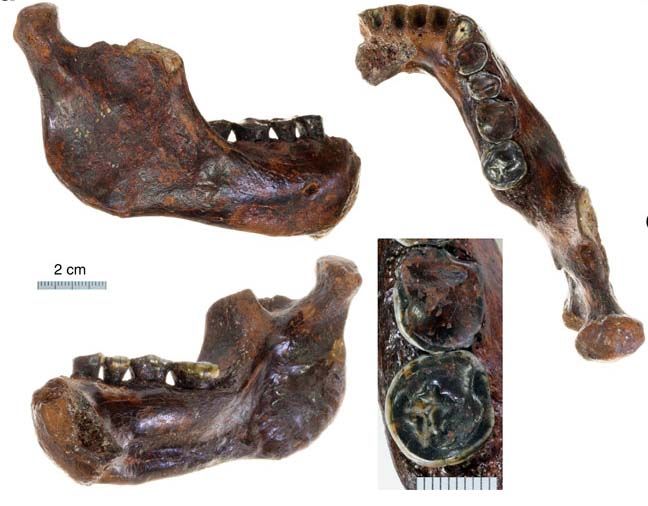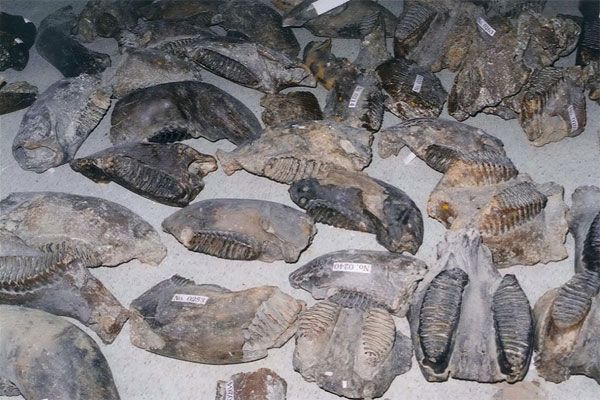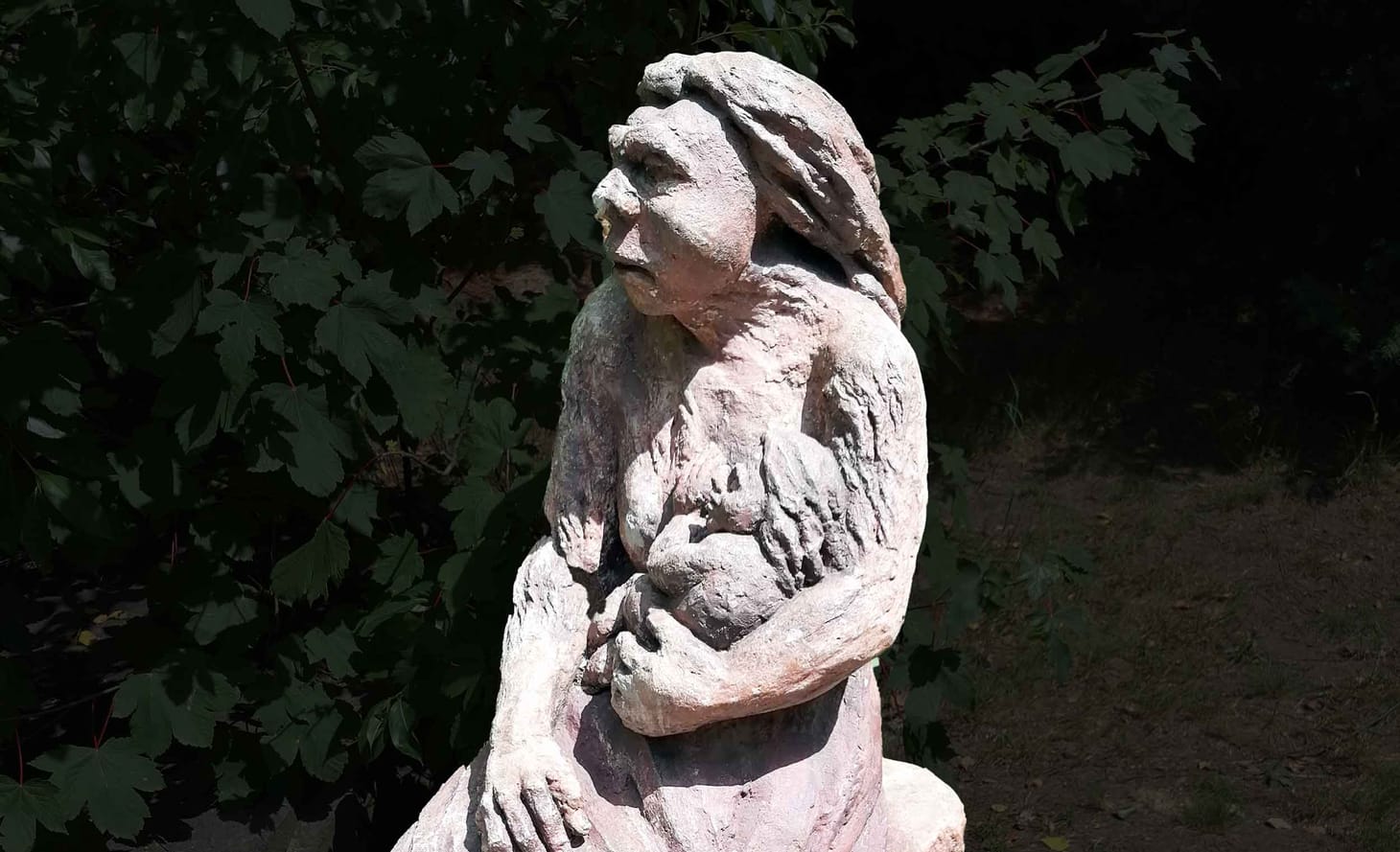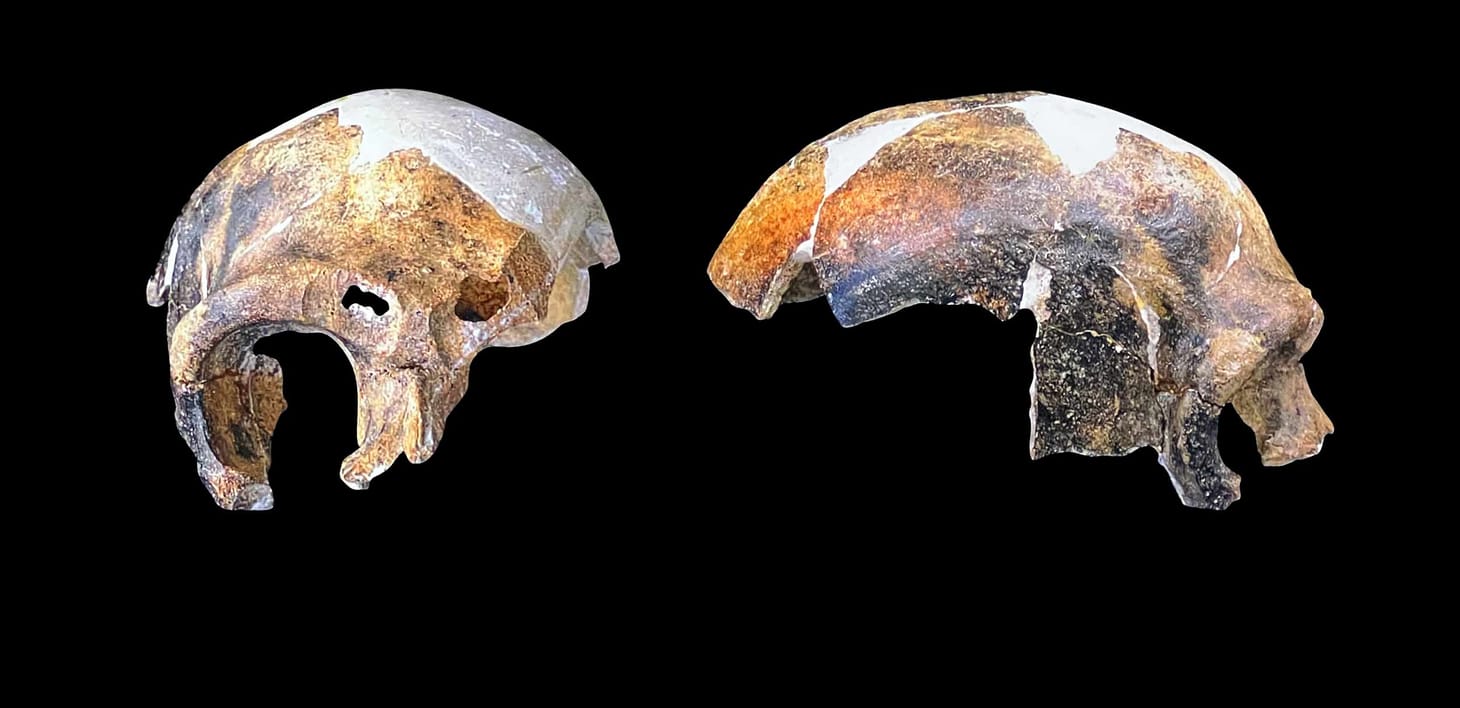An ancient human pulled from the bottom of the Taiwan Strait
Work by Chun-Hsiang Chang and coworkers describes the partial mandible, which may represent an archaic human related to the Denisovans.

From the bottom of the sea this week comes another new fossil hominin. The specimen is a partial mandible, described in Nature Communications, by Chun-Hsiang Chang and colleagues working from the National Museum of Natural Science of Taiwan. It’s a beautiful piece of bone, found in fishing nets off the Penghu Islands in the Strait of Taiwan, in waters between 60 and 120 meters deep.

The Taiwan Strait is nearly 200 kilometers wide and, like a large swath of the South China Sea, was dry land during the low sea level periods of the Pleistocene. The waters off the Taiwan coast are heavily fished, and fishing nets in these shallow waters often dredge material off the sea bed. Chang and colleagues illustrate some of the collection of fossil bone that has resulted from this dredging, for example ancient elephants:

This is not the first hominin specimen to be dredged from the seabed. The first, known as the Zeeland Ridges Neandertal specimen, was described in 2009 (Neandertal dredged from the North Sea). These undersea sites have incredible potential. In the long run, I expect we’ll be able to develop robotic methods to excavate them in situ, opening a huge avenue for future discoveries.
But at present, the problem is lack of context. With no collagen preserved in the bone, and no means of finding out where they lay within a stratographic column, only the animal bones found within the same area can help determine their possible age. Other animal bones are not “associated” with the mandible, the question is whether multiple geological deposits are being sampled over a fairly broad area. Chang and colleagues describe their process of establishing whether the Penghu 1 mandible is the same age as fossil hyena bones found in the Penghu channel, which involved testing their relative fluorine content—the same method that eventually established that the Piltdown skull and jaw did not have the same age as the ancient fauna purportedly found beside them. In this case, the mandible matches the surrounding fauna well enough to suppose that they are not samping vastly different time periods. The hyenas are a variety that existed in the region mainly after 400,000 years ago, up to the Late Pleistocene, so the authors infer that the mandible probably dates to this later component of the Asian Pleistocene fossil record. That’s where it will stand for the foreseeable future.
The morphology of the mandible doesn’t preclude anything about its date or relationships. It has a sloping mandibular symphysis and no projecting chin, and it has a very transversely thick mandibular body, especially in the part that has the molar teeth. The molars and premolars are relatively large, and although the first molar is worn to the point where its dimensions are not quite representative of the original crown size, the second molar is quite large in comparison with most Pleistocene human samples. Such features mark it as an archaic human rather than a recent modern human mandible.
The obvious question, once you eliminate that it is the jaw of a very recent person, is where does it fit in the fossil record? I’ve seen some stories where the major takeaway is that this is “surprisingly primitive” for its age, or that it may be a new, unidentified species. That’s going beyond the evidence, considering what we already know about the variation in Middle Pleistocene East Asia. For one thing, the specimen lacks a third molar, so the large size of the second molar has to be put into perspective. M3 agenesis is uncommon in archaic humans (in contrast to modern humans, where it is quite common), and one way that M3 can fail to develop is if the segmentation of the initial tissue layer that gives rise to the tooth germs goes a bit differently than normal. That means that we should be cautious in comparing tooth sizes. Likewise, the mandibular robusticity in part reflects the use of the mandible during development. The paper itself is appropriately hesitant to make any phylogenetic conclusions based on these features. I take enormous pleasure in reports like this that find new things and try to fit them into the story of our origins, but sometimes the story isn’t simple enough for headline writers. This is one of those cases.
To many anthropologists the key question is whether this at last could be another Denisovan specimen, giving some bony morphology to this population only known from genetics. That’s another question for which some perspective would be helpful. What we know from genetics is that the Neandertals had one or more sister populations that were just as different as modern humans but lived somewhere outside of Europe and the Central Asian steppe. This population was among the ancestors of living Asians and Native Americans, and made a larger contribution to peoples that today inhabit Australia, New Guinea and Oceania more broadly. We also know that the ancient genome from Denisova is a fairly distant relative to the population (or populations) that became ancestors of many of these living people.
There are lots of candidates for such populations. Obviously China is one place that may have had a diversity of ancient hominins, but so is India, Southeast Asia, and even western parts of Asia. Remember that we have no genetics from the supposed Neandertals of western Asia, like Shanidar and Amud. With no morphology associated with the Denisovan genome we have so far, my first hypothesis would be that the population may have been morphologically very much like Neandertals, maybe even sharing some of their supposedly distinctive characteristics. I leave open the interesting possibility that morphologically different populations, like the fossil sample of the Chinese and Javan Middle Pleistocene, were not Denisovans themselves but related to us in a different way. Certainly we have hints that a diversity of populations existed in the Middle Pleistocene of Africa, and I see no reason why the large hominin-suitable habitats of East and South Asia would have been less diverse. Traditionally, many of the skeletal remains in these samples have been referred to Homo erectus—indeed, we now have reason to think that the type specimen of Homo erectus probably dates closer to 500,000 years ago than a million. But the concept of Homo erectus that has stuck with us since Dubois no longer fits the data on the diversity and interactions of archaic people. There were more things afoot in Asia than a series of simple bifurcations between Homo erectus, Neandertal, Denisovan and modern populations is going to explain.
I think it is likely that there were more populations, not fewer. And I think it likely that they interacted in complex ways, not simple ones. The intensity of gene flow that genetics has already shown us among these archaic forms must suggest to us that these populations had a pattern of interactions more interesting than the old story of colonization, splitting and extinction. So I doubt that any particular Chinese specimen will end up being a Denisovan, at least not in the sense that many now are using the term. I rather imagine that a broad spectrum of “Denisovan” populations once existed, collectively much more diverse than Neandertals. I also think it likely that either East or South Asia housed some populations even more different from Neandertals than the presently-known Denisovan genome.
In that vein, the Penghu mandible could certainly represent diversity that we had not previously discovered. Or it may be a close relative of Chinese populations that are already represented in the Middle Pleistocene record, but that will have a new place in the human story. There is already a good degree of diversity in the Middle Pleistocene Chinese sample that people usually overlook. They are showing us alternate experiments in the lifeways of ancient humans as they encountered new environments and new peoples.
Reference
Chang, Chun-Hsiang, Yousuke Kaifu, Masanaru Takai, Reiko T. Kono, Rainer Grün, Shuji Matsu’ura, Les Kinsley, and Liang-Kong Lin (2015) The first archaic Homo from Taiwan. Nature Communications 6:6037 doi:10.1038/ncomms7037
John Hawks Newsletter
Join the newsletter to receive the latest updates in your inbox.



